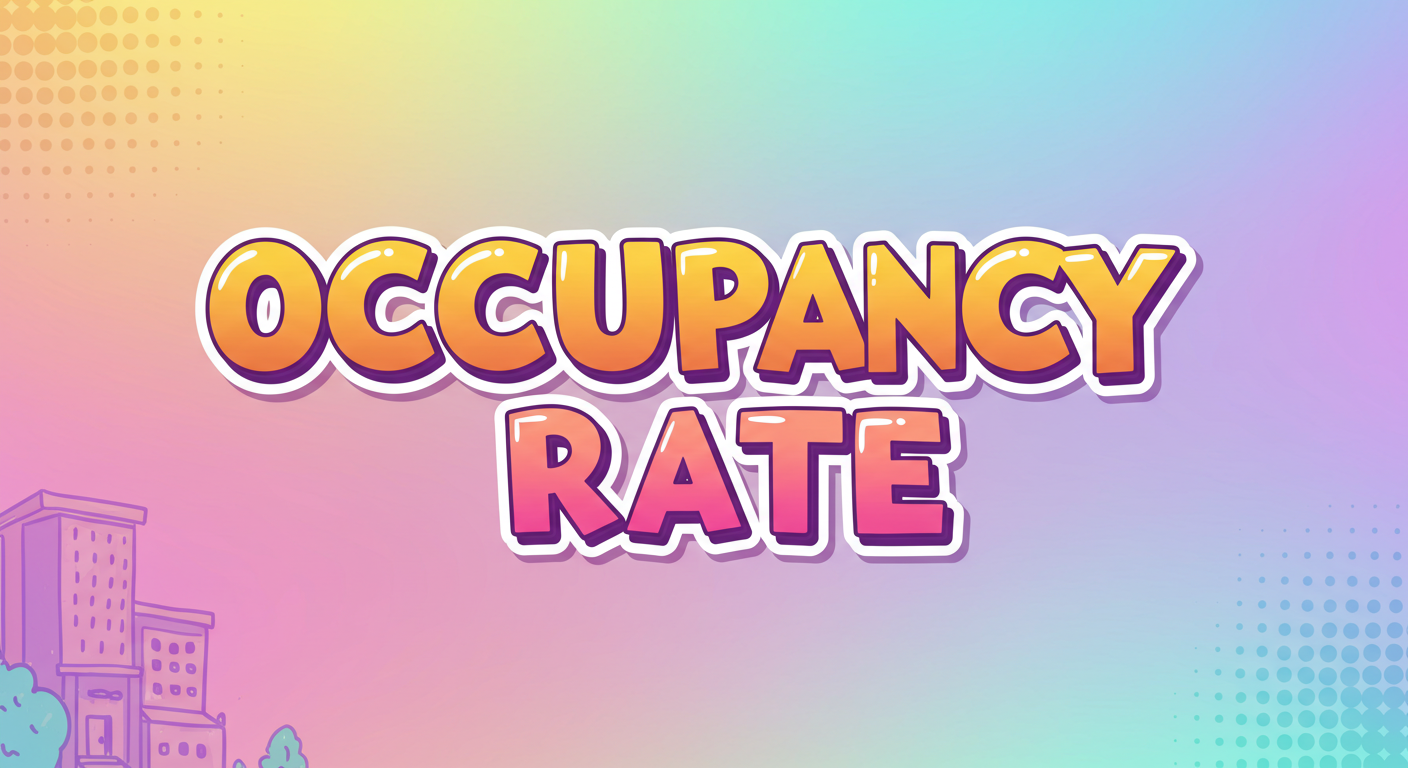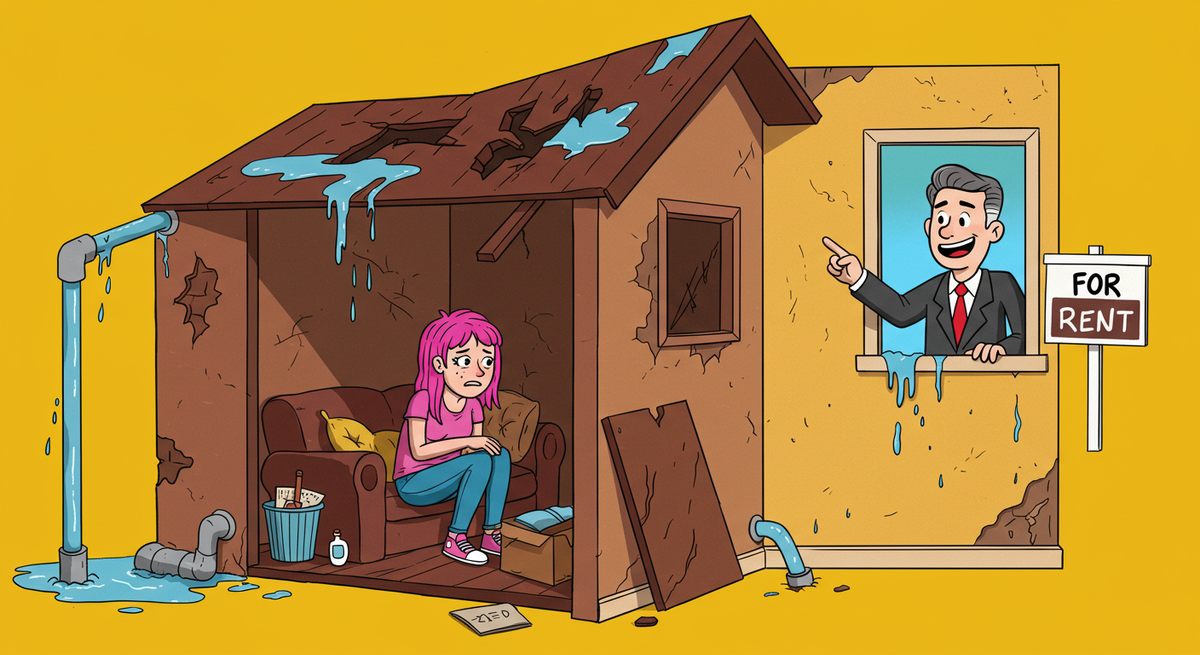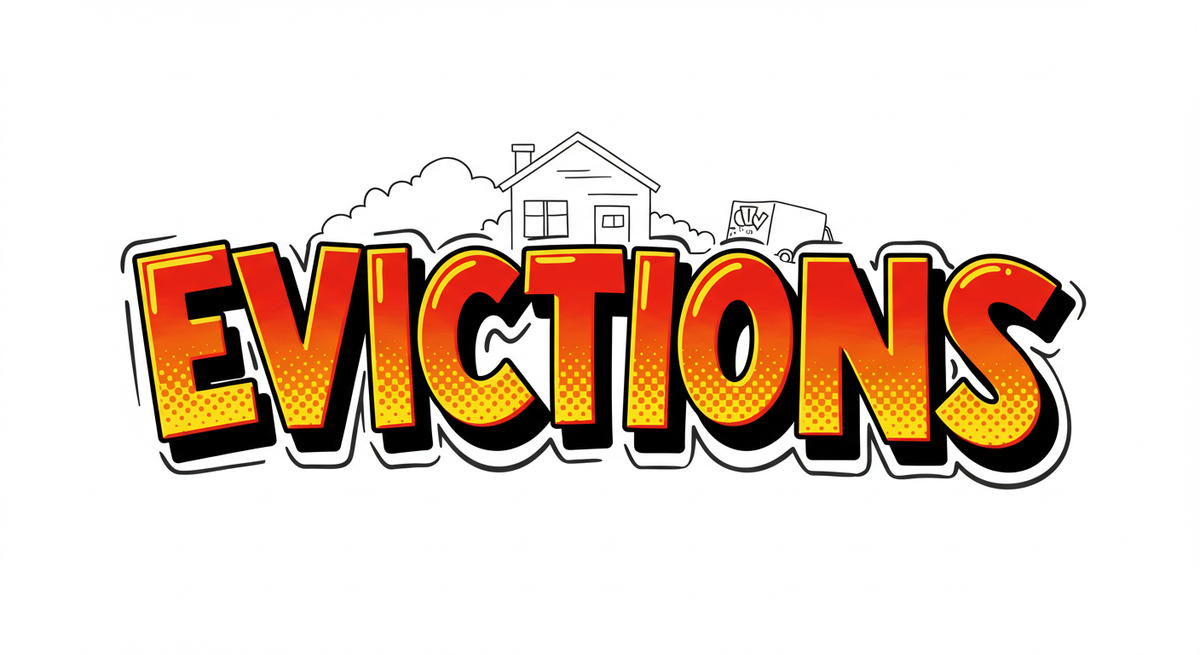What Does Current Tenant Mean?
A Complete Guide for Property Managers

A current tenant is someone who has an active lease and is legally living in your rental property right now. This might sound simple, but the legal distinction between current tenants and prospective tenants creates a world of difference in how you manage your property. Current tenants have established rights under housing laws – in every state in the US – that affect everything from rent increases to eviction procedures.
Understanding who qualifies as a current tenant impacts your daily operations in ways you might not expect. It determines which laws apply, what notices you must provide, and how much protection your tenants have against displacement.
In this article, you'll learn: What makes someone a current tenant legally, why this status matters for your bottom line, how compliance requirements vary by state, and practical strategies for managing existing tenancies while protecting your investment.
What Is a Current Tenant?
A current tenant is defined as any person who has an active lease agreement (verbal or written), and is lawfully occupying a rental property at a specific point in time. This legal status creates a formal landlord-tenant relationship with defined rights, obligations, and protections under housing law.
The term encompasses several variations depending on context:
- Existing tenant: Someone with an ongoing lease agreement
- Tenant in possession: An individual lawfully occupying the premises
- Residential tenant: Current occupant of a residential dwelling unit
- Sitting tenant: British term for current occupant (sometimes used in U.S. contexts)
Current tenant status becomes particularly important in federally assisted housing programs. HUD regulations specifically define current tenants as "those tenants who are lawfully in residence at the Project on the date of this Use Agreement." This distinction creates permanent classification with enhanced protections.

Legal Framework Variations
Different states define tenant relationships with varying specificity.
For example:
Texas Property Code defines a tenant as "a person who is authorized by a lease to occupy a dwelling to the exclusion of others and who is obligated under the lease to pay rent." This emphasizes both occupancy rights and financial obligations.
Kansas Residential Landlord and Tenant Act states that a tenant is "a person entitled under a rental agreement to occupy a dwelling unit to the exclusion of others," focusing on exclusive occupancy rights.
The distinction matters because current tenants receive different treatment than:
- Prospective tenants: Individuals applying for tenancy
- Occupants: People residing with tenants but lacking direct lease relationships
- Unauthorized occupants: Individuals living on property without proper approval
Understanding these classifications at the state level helps property managers apply appropriate screening procedures, legal protections, and operational protocols.

Why Current Tenant Status Matters in Property Management
Current tenant classification carries significant operational and financial implications that directly affect your bottom line. Missing these distinctions could cost you thousands in compliance violations and lost rental income.
Financial Impact on Operations
Current tenants generate predictable rental income streams while requiring ongoing compliance monitoring. In HUD-assisted properties, rent increases for current tenants require specific approval processes that can take 60-90 days, directly impacting cash flow projections.
When you need to implement how to raise rent on a tenant, following proper procedures protects you from legal challenges while maintaining positive tenant relationships. Retaining current tenants eliminates vacancy periods, reduces marketing expenses, and minimizes turnover costs that can quickly add up.
Legal Protections and Obligations
Current tenants enjoy enhanced legal protections compared to prospective applicants. The Fair Housing Act provides stronger discrimination protections for existing tenants, while state laws often require specific notice periods for lease modifications or terminations.
Key protection differences:
- Current tenants receive 30-90 day notice for most lease changes (varies by state)
- Prospective tenants can be denied during application process with proper documentation
- Existing tenants gain possession rights that require formal eviction procedures
- New applicants have no possession rights until lease execution

Risk Management Considerations
Current tenant status affects your property's risk profile in several ways. Insurance companies consider occupied properties differently than vacant units, often providing better rates for properties with stable, long-term tenants.
However, current tenants also present unique risks. Holdover tenancy occurs when leases expire but tenants remain in place. Unauthorized occupants can move in without approval. Property managers face ongoing maintenance obligations for habitability standards. When problems arise, the Texas eviction process requires formal legal procedures that can take months to complete.

Real-World Applications of Current Tenant Status
Understanding current tenant classifications becomes crucial in various property management scenarios. Here are common situations where this knowledge directly impacts your operations:
Example 1: Property Sale with Tenant in Place
Challenge: You're selling a rental property with a current tenant who has eight months remaining on their lease agreement.
Solution: The new property owner must honor the existing lease agreement and cannot terminate tenancy simply due to ownership change. You must provide proper notice to the current tenant about the ownership transfer and new contact information for rent payment.
Outcome: The tenant continues paying monthly rent to the new owner at the same rate, maintaining stability for all parties while ensuring legal compliance.
Takeaway: Current tenant rights transfer with property ownership, making lease terms a crucial factor in property valuations and sale negotiations.
Example 2: Rent Increase Implementation
Challenge: A property manager wants to increase rent for all tenants in a 20-unit building to match market rates.
Solution: Current tenants require specific notice periods (typically 30 days for month-to-month leases, longer for fixed-term leases approaching renewal). The manager must send written notice via certified mail and comply with local rent control ordinances if applicable.
Outcome: Properly noticed current tenants either accept the increase or provide notice to vacate, while improper notice can void the increase and create legal liability.
Takeaway: Current tenant rent increases require careful attention to notice requirements and local regulations that don't apply to new tenant pricing.
Example 3: Managing Unauthorized Occupants
Challenge: During a routine maintenance request, you discover your current tenant has allowed a roommate to move in without approval, violating the lease agreement.
Solution: Send written notice addressing the lease violation. Require either removal of the unauthorized person or completion of a formal application process for lease modification. Understanding co-signer agreements for tenants can help when additional financial security becomes necessary.
Outcome: The tenant either removes the unauthorized person, adds them to the lease through proper channels, or faces eviction proceedings for lease violation.
Takeaway: Current tenants retain rights even when violating lease terms, requiring formal notice and cure periods rather than immediate removal.

Legal and Compliance Considerations
Current tenant management involves navigating complex legal frameworks that vary significantly across jurisdictions. Understanding these requirements protects both your property investment and tenant relationships.
Federal Compliance Requirements
Fair Housing Act protections apply just as stringently to current tenants as they do to prospective applicants. You cannot discriminate against existing tenants based on protected characteristics when making decisions about lease renewals, rent increases, or property modifications.
HUD-Assisted Properties require specific protocols for current tenant management:
- Annual income recertification for all household members
- Enterprise Income Verification (EIV) system reporting
- Housing Quality Standards (HQS) maintenance
- Tenant protection requirements during ownership changes
State-Level Variations
Here is a comparison between two states and how they vary in their tenant classifications and protections.
Texas recognizes three primary current tenant classifications:
- Tenants for fixed terms: Definite lease periods with specific end dates
- Tenants at will: Month-to-month arrangements with flexible terms
- Tenants at sufferance: Holdover tenants remaining after lease expiration
Each classification requires different notice periods for termination and rent modifications.
California provides additional current tenant protections through:
- Rent stabilization ordinances in many cities limiting increase amounts
- Just cause eviction requirements in certain jurisdictions
- Tenant relocation assistance for no-fault evictions
Common Legal Pitfalls
Improper Notice Procedures: Failing to provide adequate notice for rent increases or lease modifications can void the changes and create legal liability. Each state has specific requirements for notice periods and delivery methods.
Discrimination Claims: Treating current tenants differently based on protected characteristics violates fair housing laws. Understanding common reasons to evict a tenant helps ensure you only pursue evictions for legitimate, legal reasons.
Security Deposit Violations: Mishandling current tenant security deposits during lease transitions or property sales creates liability for improper withholding. Many states require specific procedures for deposit transfers and interest payments.
Maintenance Negligence: Failing to maintain habitability standards for current tenants can result in rent withholding, lease termination, or legal action – the consequences for landlords varies by state. Your property must meet certificate of occupancy requirements throughout the tenancy.
Best Practices for Current Tenant Management
Effective current tenant management requires systematic approaches that balance legal compliance with operational efficiency. These proven strategies help maximize rental income while maintaining positive tenant relationships.
1. Implement Comprehensive Documentation Systems
What it is: Maintaining detailed records of all current tenant communications, payments, and lease modifications.
Why it matters: Proper documentation protects against legal disputes and ensures compliance with regulatory requirements.
How to do it:
- Create digital tenant files with lease agreements, payment history, and correspondence
- Document all maintenance requests and resolution timelines
- Maintain copies of all notices sent via certified mail
- Record annual recertification information for assisted housing programs
Tools to use: Property management software like Buildium, AppFolio, or Rent Manager for centralized record keeping.
2. Establish Clear Communication Protocols
What it is: Standardized procedures for tenant interactions and information sharing.
Why it matters: Consistent communication reduces misunderstandings and builds trust with current tenants.
How to do it:
- Provide multiple contact methods (phone, email, online portal)
- Respond to maintenance requests within 24-48 hours
- Send important notices via certified mail with delivery confirmation
- Maintain regular property newsletters or updates
Tools to use: Tenant communication platforms and automated notification systems.
3. Develop Proactive Maintenance Strategies
What it is: Preventive maintenance programs that address issues before they become major problems.
Why it matters: Well-maintained properties retain current tenants longer and reduce emergency repair costs.
How to do it:
- Schedule annual HVAC inspections and filter changes
- Conduct quarterly property walks with current tenants
- Address minor repairs immediately to prevent escalation
- Maintain landscaping and common areas regularly
Tools to use: Maintenance scheduling software and vendor management systems.
4. Create Retention-Focused Lease Renewal Processes
What it is: Systematic approach to lease renewals that encourages current tenant retention.
Why it matters: Retaining current tenants reduces vacancy costs and maintains stable rental income. Improving tenant satisfaction directly correlates with higher renewal rates.
How to do it:
- Begin renewal conversations 90 days before lease expiration
- Offer incentives for early renewal commitments
- Consider modest rent increases rather than market-rate jumps
- Address tenant concerns proactively during renewal discussions
Tools to use: Automated renewal reminder systems and market analysis tools for competitive pricing strategies.

5. Maintain Compliance Monitoring Systems
What it is: Regular auditing procedures to ensure ongoing compliance with all applicable regulations.
Why it matters: Compliance violations can result in significant penalties and legal liability.
How to do it:
- Create monthly compliance checklists for different property types
- Monitor local regulation changes that affect current tenants
- Conduct annual lease agreement reviews for regulatory updates
- Maintain relationships with local housing authorities for assisted properties
Tools to use: Compliance tracking software and legal update subscription services.
Related Concepts and Terminology
Understanding current tenant status requires familiarity with related property management concepts that affect day-to-day operations:
Holdover Tenant: A current tenant who remains in possession after lease expiration without landlord consent. This creates a tenancy at sufferance that may result in eviction proceedings or involuntary lease renewal depending on landlord actions.
Tenant in Common: Multiple current tenants sharing equal rights to occupy the same rental property. Each tenant holds individual responsibility for the entire rent amount, creating joint and several liability.
Authorized Occupant: Individuals approved to live with current tenants but not named on the lease agreement. These occupants have limited rights and cannot maintain tenancy if the primary tenant vacates.
Sublessee: A person who rents from a current tenant rather than directly from the property owner. Subletting typically requires landlord approval and creates a secondary tenant relationship.
Month-to-Month Tenant: Current tenants operating under periodic lease agreements that automatically renew each month unless properly terminated by either party.
These distinctions matter because each relationship type requires different management approaches, legal protections, and termination procedures. Property managers must identify the correct tenant classification to apply appropriate policies and procedures.
Common Questions About Current Tenants
What does current tenant mean?
A current tenant is anyone who has signed a lease and is actively living in your rental property right now. This legal status gives them specific rights that differ from people just applying for your property. Current tenants enjoy protection against discrimination, require formal notice for most changes, and can only be removed through official eviction procedures if they violate their lease terms.
Is a tenant the same as a renter?
Yes, tenant and renter essentially mean the same thing in property management. Both terms describe someone who pays to live in a property they don't own. Some people prefer "renter" because it sounds less formal, while "tenant" appears more often in legal documents and lease agreements. The distinction doesn't matter legally—both terms carry the same rights and responsibilities.
Should you buy a house with tenants?
Buying a tenant-occupied property can be profitable if you understand the implications. Current tenants come with existing lease agreements that transfer to you as the new owner. You cannot immediately raise rents or change terms until leases expire. However, you start earning rental income immediately without vacancy periods. Review existing leases carefully and factor current rent rates into your purchase decision.
What are your responsibilities as a tenant?
Current tenant responsibilities typically include paying rent on time, maintaining the property in reasonable condition, following lease terms, and respecting neighbors. Tenants must allow reasonable access for repairs and inspections with proper notice. They're responsible for damages beyond normal wear and tear. Most importantly, tenants should communicate with property managers promptly about maintenance issues or lease questions.
Are you supposed to get your security deposit back?
Yes, current tenants should receive their security deposit back if they haven't caused damage beyond normal wear and tear. Property owners must return deposits within timeframes specified by state law (typically 14-30 days after move-out). Landlords can only withhold portions for actual damages, unpaid rent, or cleaning costs beyond normal maintenance. Always document property condition during move-in and move-out to avoid disputes.
Should you show your rental property to prospective tenants while occupied?
Yes, you can show occupied rental properties to prospective tenants, but you must follow proper procedures. Current tenants deserve reasonable notice (typically 24-48 hours) before showings. Schedule showings at convenient times and limit frequency to avoid harassment claims. Some property managers offer current tenants small incentives for cooperation during showing periods. Consider incentives if current tenants are uncooperative but you need access for legitimate business purposes.
Over the years, when a tenant has given a move out notice, I have listed their rental to pre-lease it. If I didn't have a model unit, that meant I had to show their rental before they had moved out. If I was doing a lot of showings, I would often ofter some kind of incentive – such as discounted rent – for the inconvenience. It's a small price to pay to have the rental pre-leased, and scheduled for a quick move in for the new tenant so that there's no lapse in rental income.
Can your landlord enter your apartment at any time?
No, landlords cannot enter rental properties whenever they want. Current tenants have rights to "quiet enjoyment" of their homes. Property owners must provide proper notice (usually 24 hours) except for genuine emergencies like gas leaks or fires. Entry must be for legitimate purposes like repairs, inspections, or showings. Unauthorized entry can violate tenant rights and potentially constitute harassment or trespassing.
Conclusion and Key Takeaways
Managing current tenants effectively requires balancing legal compliance with operational efficiency while maintaining positive relationships that encourage long-term retention. Understanding the legal distinctions between current and prospective tenants protects your investment while ensuring fair treatment for all parties.
Key takeaways for successful current tenant management:
- Legal classification matters: Current tenants enjoy enhanced protections that require specific procedures for rent increases, lease modifications, and tenancy termination
- Documentation is critical: Maintaining comprehensive records of all tenant interactions, payments, and communications protects against legal disputes and ensures regulatory compliance
- Retention saves money: Keeping current tenants costs significantly less than finding new ones, making tenant satisfaction a profitable investment
- Proactive communication works: Regular, clear communication with current tenants prevents misunderstandings and builds trust that encourages lease renewals
Successful property management in today's regulatory environment requires staying informed about changing laws, maintaining detailed records, and treating current tenants as valuable business partners rather than mere occupants. Mastering these concepts directly improves your bottom line through reduced turnover costs, fewer legal disputes, and more stable rental income streams.
Helpful Resources:
- HUD Handbook 4350.3 for federally assisted housing compliance
- National Apartment Association for industry best practices and legal updates
- Fair Housing Act Guidelines for discrimination prevention
- Local housing authority websites for jurisdiction-specific regulations
- Property management software comparison guides for documentation systems











